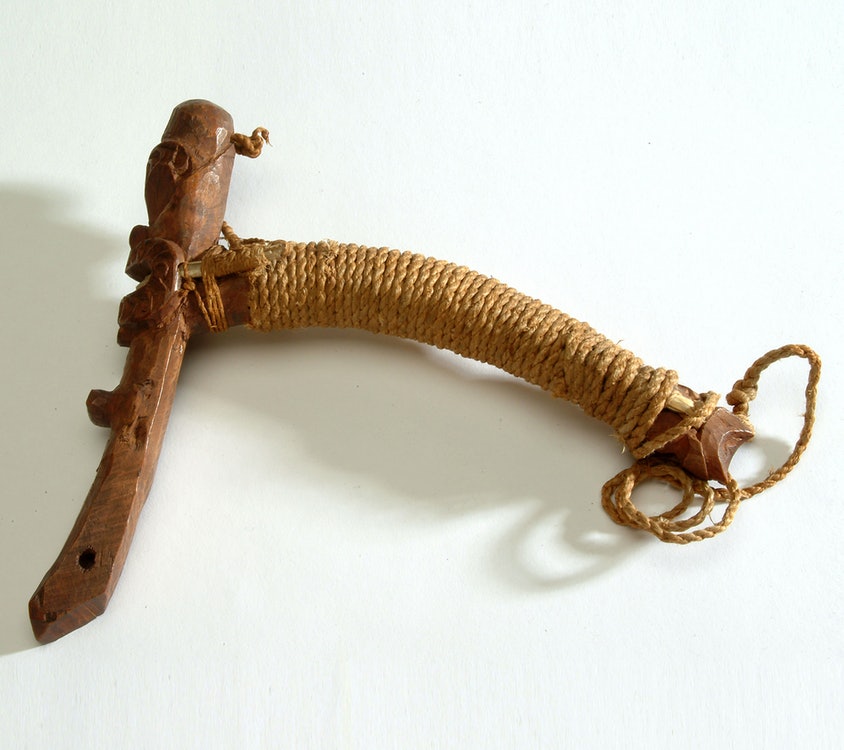8. Mahi Kai - Food Gathering
View Map map
These spears and snares are the equipment Māori used to catch manu or birds. Bird catching season mainly took place in autumn. Manu were an important source of protein and getting in this food supply was a crucial part of the seasonal calendar.
Pet birds were used as decoys, or some trappers imitated bird calls.
Let’s take a closer look at the mutu kaka – the L- or T-shaped snares at the far left of the case. These were mostly used to catch kākā and tūī. You can see a horizontal perch which has a cord resting on it. When a bird landed on the perch, the trapper would pull the cord and the loop would capture the bird’s leg against the upright. Keeping the cord tight, he would then unhook the mutu from the tree and bring the bird down. Mutu were also used on the ground.
Now look up to the large bird feeder or waka manu at the top of the case. This was mainly used to catch kererū, a large native pigeon. These were often placed in miro trees where kererū feed on berries. The feeders were placed in the same trees year after year and left there until the birds got used to them. Looped snares were then placed very closely together in the feeder. After the thirsty work of feasting on berries the birds had to put their heads through the tangles of loops to drink from the trough.
The sea was another important source of food and behind you are some of the nets, traps, and hooks used to catch fish and other kaimoana or seafood. Take a moment to look at this case before moving on to see how kai or food was stored and carried.
Next we head to stop 9 – turn and walk to the other side of the doorway.
